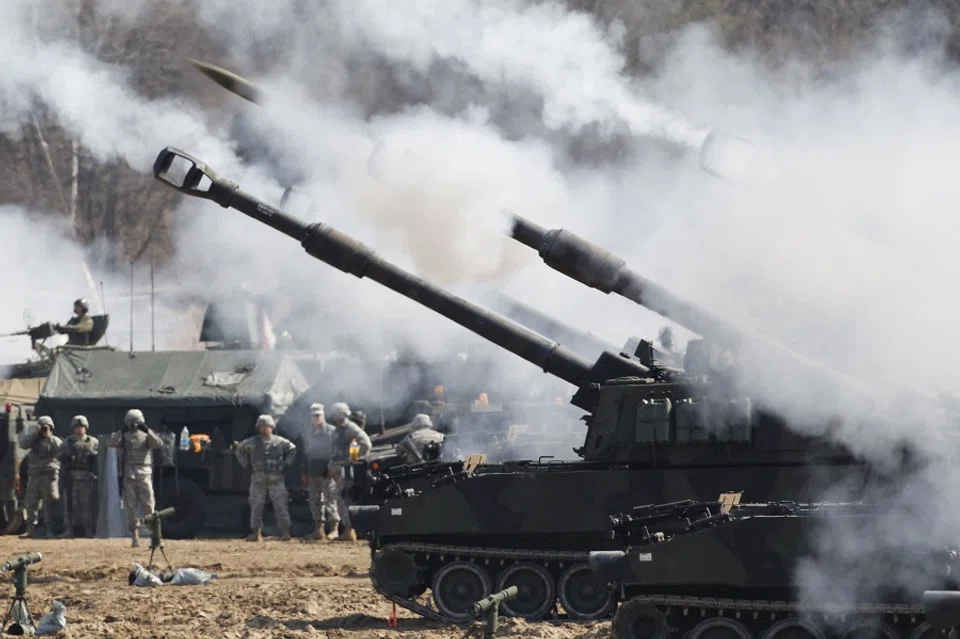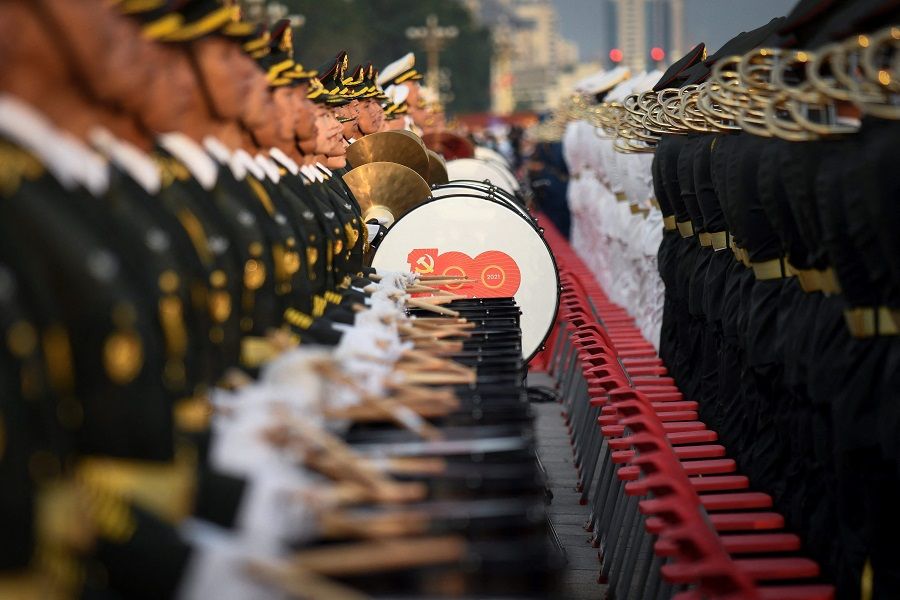Will the US's 'integrated deterrence' keep China in check?

On 30 April, US Defence Secretary Lloyd J. Austin III spoke of "integrated deterrence" for the first time during a US Indo-Pacific command ceremony at Joint Base Pearl Harbor-Hickam, Hawaii. This news largely went unnoticed.
At the Global Emerging Technology Summit organised by The National Security Commission on Artificial Intelligence on 13 July, Austin once again said that integrated deterrence is about "using the right mix of technology, operational concepts, and capabilities - all woven together in a networked way that is so credible, and flexible and formidable that it will give any adversary pause".
According to an article published on The National Interest: The integration focus of the strategy is clearly invested in the need for multi-domain operations and joint US-allied war preparation exercises. If the US military truly strengthens its clear margin of technological superiority and of course solidifies its connection to allies, then it could lead to a potentially effective deterrence strategy.
He was clear that the main target of this new strategy is essentially China. But, is this strategy really so effective?

On 27 July, Austin talked about the new approach again in Singapore. He said, "Now, integrated deterrence means using every military and non-military tool in our toolbox in lockstep with our allies and partners... and deploying them all in new and networked ways." Also: "And we'll work with our allies and partners to make sure that we have the capacity and the capability that any adversary that would want to take us on - along with our partners - would be very, very discouraged to do that." He was clear that the main target of this new strategy is essentially China. But, is this strategy really so effective?
'Integrated deterrence' in practice
Integrated deterrence theory was originally a subset of organisational behaviour theory. It was used by businesses to study competitors' psychological and behavioural performance and patterns so as to predict, influence and control an opponent's behaviour to achieve its objectives. For example, instead of vying directly for market dominance, a brand could threaten reprisals in other areas, forcing the competitor to weigh the pros and cons and give up the fight on their own.
The success of any effective deterrence depends on 3Cs. Firstly, the opponent must believe you are capable. Secondly, your methods must be credible. Thirdly, your message must be communicable.
This same 3Cs theory is used in the military field to influence the opponent's decision. In the use of traditional deterrence during the Cold War era, conditions for 3Cs were basically present. The US and the Soviet Union were evenly matched in strategic weapons, creating a scenario for "mutually assured destruction". Conventional military deployment was thus of secondary importance.
Following the Ukraine crisis in 2014, the US began to think that traditional deterrence was no longer effective because Russia did not take direct military actions but instead used non-military means to control eastern Ukraine and used a referendum to annex Crimea.
... under the American system, it is very difficult to establish a whole-of-nation system of national security policies unless there are clear goals. That is why China has been labelled the US's primary competitor.

After US President Joe Biden took office, Ely Ratner, US assistant secretary of defence for Indo-Pacific security and former head of the department's China task force, identified China as the target of the US's military deterrence. The US mainly seeks nuclear strategic stability when dealing with Russia but dealing with China requires all-round competition.
Weaknesses of all-round deterrence strategy against China
Integrated deterrence requires three decision-making procedures: horizontal, vertical, and functional. Horizontal integration refers to the so-called whole-of-nation approach where all government departments and private enterprises are included in the framework of deterrence against China, combining military and non-military deterrence. However, under the American system, it is very difficult to establish a whole-of-nation system of national security policies unless there are clear goals. That is why China has been labelled the US's primary competitor.
Vertical integration means that the chains of command of all military units must be networked to unify the management of strategic and tactical commands. Functional integration refers to non-military means, especially the coordination between deterrence strategies and the diplomatic, economic and trade fields. In the past, military actions were generally reduced prior to diplomatic negotiations to create a more conducive environment for the talks. Now, the reverse is true - navy navigation operations and economic sanctions are instead ramped up prior to the negotiations to strengthen the talks. For example, an aggressive approach to human rights issues is considered beneficial in enhancing deterrence.
There are also weaknesses in the application of 3Cs. Increased military deployment and operations around China is a show of military capability, but this will result in constant tension. The deployment of new weapons developed by the US is targeted at the Western Pacific. As China's edge is in land-based missiles, the US is compensating for this via maritime deterrence. It is expected that the US's nuclear submarines will be lurking near the Taiwan Strait for a long time.

In terms of credibility, while the US can help enhance Taiwan's military capabilities, Beijing does not believe that the US will directly intervene to defend Taiwan. Thus, since the US is unable to gain the trust of both mainland China and Taiwan, it has little deterrent effect against the mainland's possible invasion of Taiwan.
Obstacles to communicability are even greater as it is already difficult to make progress in everyday diplomacy.
In sum, integrated deterrence is unlikely to work and it is highly likely that various parties will misjudge the Taiwan Strait issue.
The US National Security Council's coordinator for Indo-Pacific affairs Kurt Campbell openly said that top Chinese diplomats Yang Jiechi and Wang Yi are "nowhere near, within a hundred miles" of Chinese President Xi Jinping's inner circle, implying that the China-US Alaska dialogue was a waste of time. Austin, on the other hand, is unwilling to speak with his Chinese counterpart as he thinks that the Chinese defence minister is not his equal. These are examples of extreme arrogance.
In sum, integrated deterrence is unlikely to work and it is highly likely that various parties will misjudge the Taiwan Strait issue. Populism has held diplomacy hostage and integrated deterrence will be unable to reduce the risk of conflict. The US needs to think wisely before taking action and should consider a strategic readjustment.
After WWII, Pax Americana crumbled on the battlefields of North Korea, Vietnam, Iraq, and Afghanistan. In those places, the US's rivals were vulnerable groups who had nothing to lose and who were not afraid of any form of deterrence. The outlook of a long-term US-China confrontation may be even more grim.
Related: 'Mini' Shangri-La Dialogue: The US needs to provide tangible deliverables in Southeast Asia | Japanese academic: Biden must not underestimate China's maritime ambitions | Alaska meeting: A historic moment of China standing up to the West? | Biden's impressive 'three-in-one' policy to deal with China | Will the US abandon Taiwan? | Will the Taiwan Strait issue be internationalised under Biden?
